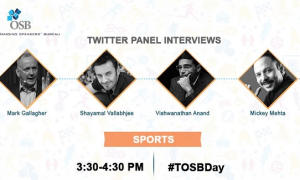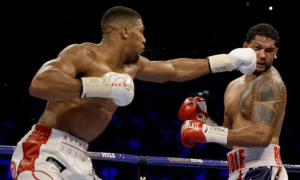The TGL (Tech Golf League) is bringing a bold new energy to golf, merging traditional play with cutting-edge technology. But with this innovation comes a learning curve – especially for bettors. One of the most overlooked factors when wagering on TGL events is the individual player matchup. Unlike full-tournament betting, where form and course fit reign supreme, TGL’s head-to-head showdowns demand sharper attention to real-time performance, skill dynamics, and team synergy. Understanding how players stack up against one another is crucial if you want to place smarter bets.
TGL Format Reshapes Matchup Dynamics
The unique format of TGL affects how player matchups unfold—and how bettors should interpret them.
In TGL, players don’t walk a sprawling golf course. They compete indoors on a virtual screen for long shots and a live short game area for chips and putts. Matches unfold over a compressed timeframe, and players rotate in and out during team play. The rhythm, the pace, and the strategy differ drastically from traditional PGA events. That means typical metrics like driving distance or long-term tournament averages don’t always apply.
Instead, bettors should evaluate players on how they perform under high-pressure, time-sensitive conditions. Some golfers thrive in the fast-paced, spotlight-heavy environment. Others, especially those more methodical in traditional play, may struggle to adapt. Watching how a player responds to the unique TGL setup—especially over multiple matches—gives bettors the clearest picture of potential outcomes in one-on-one matchups.
Individual Styles Collide
Each player brings a specific toolkit to the virtual tee box. Recognizing how styles clash (or complement) is key to predicting outcomes.
Let’s say a precision-first golfer like Matt Fitzpatrick goes up against a high-risk, high-reward shotmaker like Bryson DeChambeau. On a standard course, both might finish under par—but in a head-to-head setting, their decisions carry more weight. DeChambeau’s aggressive style could deliver big moments—or backfire dramatically. Fitzpatrick’s consistency, on the other hand, might grind out steady points over time.
These stylistic contrasts play out in micro-matchups. Bettors must look beyond traditional rankings and instead analyze short bursts of play. Who can stay mentally sharp in a high-octane, tech-driven arena? Who handles quick transitions between full swings and delicate chips with more poise? The answers determine more than just bragging rights—they decide winning tickets.
Past PGA Rivalries Don’t Always Translate
Don’t fall into the trap of leaning too hard on past PGA Tour matchups. TGL levels the playing field in unexpected ways.
A player who historically trails a rival in stroke play may suddenly find the advantage indoors. Take putting, for example. On a traditional green, grain, slope, and wind all influence outcomes. In the TGL short game area, these variables change—sometimes disappearing entirely. A traditionally weak putter might find newfound confidence on consistent surfaces. A seasoned tour winner who leans on course knowledge could lose that edge.
It’s why following the latest golf news—especially coverage focused on TGL adaptation—matters more than ever. Some players have openly discussed the learning curve, while others are quietly refining their indoor game behind the scenes. Keeping up with those insights gives bettors clues that don’t show up in stat sheets.
Also, consider the mental side. TGL matches unfold in front of a live crowd with stadium lighting and screens flashing stats in real-time. Some players embrace that intensity. Others get rattled. Bettors need to observe—not assume. Watch prior TGL performances, not just PGA records, to identify who’s made the adjustment.
Team Chemistry Still Impacts Individual Bets
Even when betting on individual matchups, don’t ignore the surrounding team environment.
Players in TGL are drafted onto teams, and those dynamics matter. Communication, strategy sharing, and emotional support all play subtle roles—even when a player takes center stage in a head-to-head. A confident, unified team often helps individuals maintain composure. Meanwhile, disjointed squads tend to leak tension, which shows up in performance.
A solid player may struggle if paired with teammates who lack the ability to offer feedback between shots. Conversely, a lesser-known player may outperform expectations when supported by experienced veterans. TGL bettors should assess both the matchup and team dynamics. Is the team stable and in sync? If so, even an underdog could present strong value.
In-Match Momentum Shifts Matter More Than Ever
In a format as condensed and high-stakes as TGL, momentum swings are amplified—and they can decide a match in seconds.
Unlike a four-day tournament where players have hours to recover, TGL matchups move fast. One missed putt can flip an entire round. That’s why bettors need to monitor not just the scorecard, but the psychological flow. Does a player recover quickly from mistakes? Do they ride hot streaks with confidence or lose steam?
Understanding these momentum shifts becomes especially important when betting on TGL odds in real-time. A line that looks stable can swing dramatically after just a few shots. Live betting markets reflect these changes quickly, often rewarding those who can anticipate a comeback—or sense when a lead is about to collapse. A player down early might roar back if they’ve shown mental toughness in past TGL rounds. Others might crumble under pressure, even with a slim lead. Bettors who recognize these traits—not just stats—gain a huge edge.
Matchup-Specific Stats Worth Tracking
TGL is still new, but over time, stat-tracking tailored to matchups will become essential for smart wagers.
Here are a few to prioritize as data becomes more available:
- Conversion rate on the simulator: How often does a player land their shots near the pin during long-range simulator play?
- Short game consistency: Do they routinely sink putts inside 10 feet in the controlled putting arena?
- Shot decision timing: How quickly do they commit and execute under the shot clock?
- Success when teeing off second: Some players thrive when reacting to an opponent’s shot rather than setting the tone.
- Performance in tie-breakers: A few TGL matches go to extra holes—who shines in that high-pressure moment?
These numbers don’t exist in full just yet, but early trends are emerging. Bettors who follow TGL from match to match and track these traits manually (or find advanced stats providers) will stay ahead of the curve.
Betting on Matchups in TGL Isn’t Guesswork
In the TGL’s high-energy, compressed format, every shot carries more weight—and so does every betting decision. Ignoring player matchups or leaning too heavily on PGA history is a fast track to bad picks. But bettors who dig deeper—watching team dynamics, tracking short-game consistency, and recognizing how momentum builds and breaks—are better positioned to make smart calls.
This isn’t about who has the most titles. It’s about who shows up ready for the lights, the screens, and the pressure. Keep your eye on the player, not the name, and you’ll turn a wild new format into a profitable one.
Tags: Golf, Golf News, PGA, Tech Golf League, TGL










